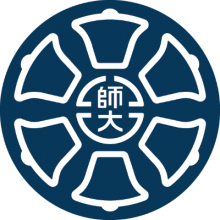About University of Dhaka
In 1921, the University of Dhaka opened its doors to students with Sir P. J. Hartog as the first vice-chancellor of the university.
At present, the university consists of 13 faculties, 71 departments, 10 institutes, 17 dormitories, three hostels and more than 38 research centres. As the pioneer and the largest seat of learning in the country, the University of Dhaka fosters the transformation processes of students and the country as a whole through its educational and research facilities.
A new phase began in the history of the university with the emergence of the People's Republic of Bangladesh in 1971. This has been a phase of development, expansion and consolidation of earlier gains. The university has assumed a central role in the academic pursuits of the region. The university played a central role in the Language Movement of 1952 that ultimately culminated in the recognition of Bangla as the state language. Scores of students, teachers and employees of the University of Dhaka laid down their lives for the independence of the country.
Just after the creation of Bangladesh, the government proclaimed the University of Dhaka Order 1973 whereby democratic norms and autonomy became integral features of the institution.
The University of Dhaka is now the largest public university in Bangladesh. The University Library, spread across three different buildings, is the biggest in Bangladesh, comprising 617,000 volumes. There is also a medical centre with 24/7 service and a dental unit, eye unit, X-Ray department and two ambulances. Notable alumni include Muhammad Younous, Bangladesh’s only Nobel Prize winner, as well as many Bangladeshi presidents, prime ministers, artists, journalists and businessmen.
Explore these featured universities
Explore rankings data for University of Dhaka
Compare universities on their key stats
Key statistics
- 3%Percentage of International Students(1)
- 12.5No. of students per staff(1)
- 194,187Number of FTE Students(1)
- 25%Proportion of ISR Publications(1)
- 59 : 41Student Ratio of Females to Males(1)
Subjects taught at University of Dhaka
Physical sciences
- Mathematics & Statistics
- Geology, Environmental, Earth & Marine Sciences
- Chemistry
- Physics & Astronomy
Social sciences
- Geography
- Politics & International Studies (incl Development Studies)
- Communication & Media Studies
- Sociology
Engineering & technology
- General Engineering
- Chemical Engineering
- Electrical & Electronic Engineering
Business & economics
- Economics & Econometrics
- Accounting & Finance
- Business & Management
Arts & humanities
- Art, Performing Arts & Design
- Languages, Literature & Linguistics
- History, Philosophy & Theology
Law
- Law
Computer science
- Computer Science
Psychology
- Psychology
Life sciences
- Biological Sciences
Education
- Education










